The Sensitive Element of Acoustic Sensor on Circular Polarized Waves: From Theoretical Considerations towards Perspective Rotation Rate Sensors Design
Abstract
1. Introduction
2. Theoretical Analysis
2.1. Theoretical Basis
2.2. Circularly Polarized Acoustic Waves (CPAW)
3. CPAW Direct Excitation
3.1. Theoretical Analysis
3.2. Experimental Research
4. Experimental Research
5. Experimental Results
6. Discussion
- As shown by the theoretical analysis of the propagation of bulk shear waves along the rotation axis, the phase velocity of a circularly polarized acoustic wave depends on the rotation rate.
- Based on the revealed effects, the change in the phase velocity of the circularly polarized acoustic wave is suggested to be an informative parameter for rotation rate solid-state acoustic sensors design.
- Based on the results of theoretical analysis, a new design of a piezoelectric transducer for direct radiation of circularly polarized acoustic wave was offered and designed. The performed computational modeling and experimental research confirmed the circular nature of the particle motion in the radiated wave.
- Based on the results of theoretical analysis, the new physical concept of the rotation rate sensor on the circularly polarized acoustic wave was developed, experimental studies of the test model were carried out, which confirmed its efficiency. The sensitivity of the developed acoustic sensor was estimated to be 340 μV/r/s.
- The theoretical assumptions, as well as the proposed concept for acoustic solid-state sensor design are in agreement with the experimental results demonstrating the linear-type dependence of the informative parameter on the angular velocity of medium rotation.
- The level of the informative signal, obtained experimentally, shows a high correlation with the previously determined theoretical sensitivity level of the proposed model of the rotation rate sensor based on circularly polarized acoustic waves.
7. Patents
- Lutovinov A.I.; Lukyanov D.P.; Peregudov A.N.; Pozhenskaya A.A.; Shevelko M.M. Method of measurement of angular rate and sensitive element of gyroscope based on it. 27 June 2014, Patent of Russian Federation № 2520949.
- Lutovinov A.I.; Pozhenskaya A.A.; Peregudov A.N.; Shevelko M.M. Piezoelectric transducer. 10 June 2014, Patent of Russian Federation № 2529824.
Author Contributions
Funding
Data Availability Statement
Conflicts of Interest
References
- Mingang, B. Analysis and Design Principles of MEMS Devices; Elsevier: Amsterdam, The Netherlands, 2005. [Google Scholar]
- Dey, N.; Ashour, A.S.; Mohamed, W.S.; Nguyen, G.-N. Acoustic Sensors for Biomedical Applications; Springer: Cham, Switzerland, 2019; pp. 33–41. [Google Scholar]
- Zhang, C.; Ghosh, A.; Zhang, H. Langasite-based BAW resonator coated with ZnO for high temperature CO2 gas sensing with temperature compensation (Conference Presentation). In Proceedings of the Sensors and Smart Structures Technologies for Civil. Mechanical, and Aerospace Systems 2019, Denver, CO, USA, 4–7 March 2019; p. 932. [Google Scholar]
- Shevchenko, S.Y.; Mikhailenko, D.A.; Markelov, O.A. Comparison of AlN vs. SIO2/LiNbO3 membranes as sensitive elements for the SAW-based acceleration measurement: Overcoming the anisotropy effects. Sensors 2020, 20, 464. [Google Scholar] [CrossRef] [PubMed]
- Sherrit, S.; Bao, X.; Bar-Cohen, Y.; Chang, Z. BAW and SAW sensors for in situ analysis. In Proceedings of the Smart Structures and Materials 2003: Smart Sensor Technology and Measurement Systems, San Diego, CA, USA, 23 July 2003; Volume 5050, pp. 81–91. [Google Scholar]
- Kuchmenko, T.A.; Lvova, L.B. A perspective on recent advances in piezoelectric chemical sensors for environmental monitoring and foodstuffs analysis. Chemosensors 2019, 7, 39. [Google Scholar] [CrossRef]
- Shevchenko, S.Y.; Khivrich, M.A.; Markelov, O.A. Ring-shaped sensitive element design for acceleration measurements: Overcoming the limitations of angular-shaped sensors. Electronics 2019, 8, 141. [Google Scholar] [CrossRef]
- Serhane, R.; Hadj-Larbi, F.; Lafane, S.; Abdelli-Messaci, S.; Boutkedjirt, T. The Heterostructure ZnO/Al/SiO2/Si Fabrication for Piezoelectric SAW and BAW Transducers and Sensors. J. New Technol. Mater. 2017, 277, 1–6. [Google Scholar] [CrossRef]
- Shevchenko, S.; Kukaev, A.; Khivrich, M.; Lukyanov, D. Surface-acoustic-wave sensor design for acceleration measurement. Sensors 2018, 18, 2301. [Google Scholar] [CrossRef] [PubMed]
- Lukyanov, D.; Shevchenko, S.; Kukaev, A.; Filippova, E.; Safronov, D. Micromechanical accelerometers based on surface acoustic waves. In Proceedings of the NORCHIP 2014—32nd NORCHIP Conference: The Nordic Microelectronics, Tampere, Finland, 27−28 October 2014; pp. 1–4. [Google Scholar]
- Subba Rao, V.; Nigam, S.D. Wave propagation in rotating elastic media. Mathematica 1964, 11, 29–38. [Google Scholar] [CrossRef]
- Schoenberg, M.; Censor, D. Elastic waves in rotating media. Quart. Appl. Math. 1973, 31, 115–125. [Google Scholar] [CrossRef]
- Schoenberg, M.; Censor, D. Two-dimensional wave problems in rotating elastic media. Appl. Sci. Res. 1973, 27, 401–414. [Google Scholar]
- Hamisch, H. Die Ausbreitung elastischer Wellen im rotierenden Medium. Acustica 1990, 72, 275–279. [Google Scholar]
- Erofeev, V.I.; Kluyeva, N.V.; Soldatov, I.N. Wave propagation in rotating elastic solid. Comput. Contin. Mech. 2008, 1, 39–47. [Google Scholar] [CrossRef][Green Version]
- Gribkova, E.; Peregudov, A.; Shevelko, M. Theoretical and experimental researches of bulk acoustic wave’s availability in angular motion sensors. In Proceedings of the IEEE Russia, St. Petersburg, Russia, 8–11 June 2010; pp. 69–72. [Google Scholar]
- Gribkova, E.; Kukaev, A.; Lukyanov, D.; Lutovinov, A.; Peregudov, A. Solid-state motion sensors on acoustic waves. Theory and experiment. In Proceedings of the 2014 Symposium on Piezoelectricity, Acoustic Waves, and Device Applications, Beijing, China, 30 October–2 November 2014; pp. 69–71. [Google Scholar]
- Lutovinov, A.I.; Shevelko, M.M.; Peregudov, A.N.; Gribkova, E.S. Theoretic and experimental research of possibility to radiate circular polarized acoustic waves. In Proceedings of the Conference of XXVII Session of RAS and Scientific Council of RSA on Acoustics, Saint-Petersburg, Russia, 16–18 April 2014; pp. 900–905. [Google Scholar]
- Durukan, Y.; Shevelko, M.; Peregudov, A.; Popkova, E.; Shevchenko, S. The effect of a rotating medium on bulk acoustic wave polarization: From theoretical considerations to perspective angular motion sensor design. Sensors 2020, 20, 2487. [Google Scholar] [CrossRef] [PubMed]
- Lyamov, V.J. Polarization Effects and Anisotropy of Acoustic Waves’ Interaction in Crystals; Moscow University Publisher: Moscow, Russia, 1983. [Google Scholar]
- LTD «Inertech». Available online: http://inertech-ltd.com/%d1%81%d0%be%d0%b0-15-5/ (accessed on 17 September 2020).



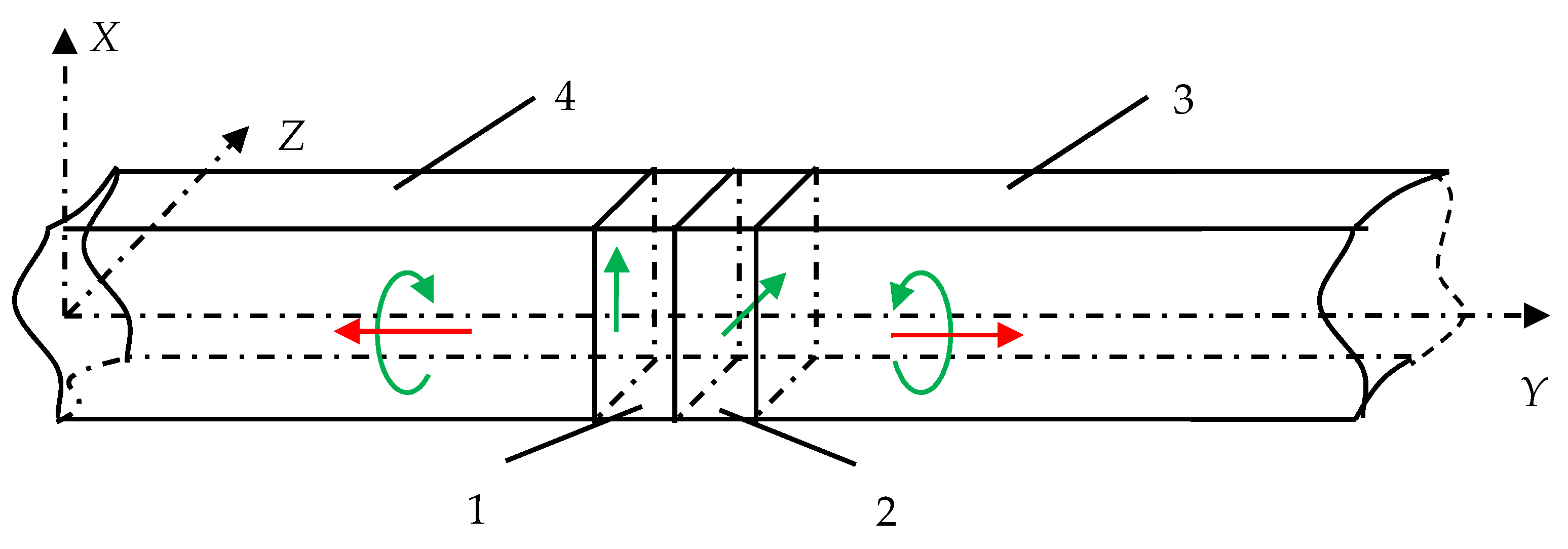
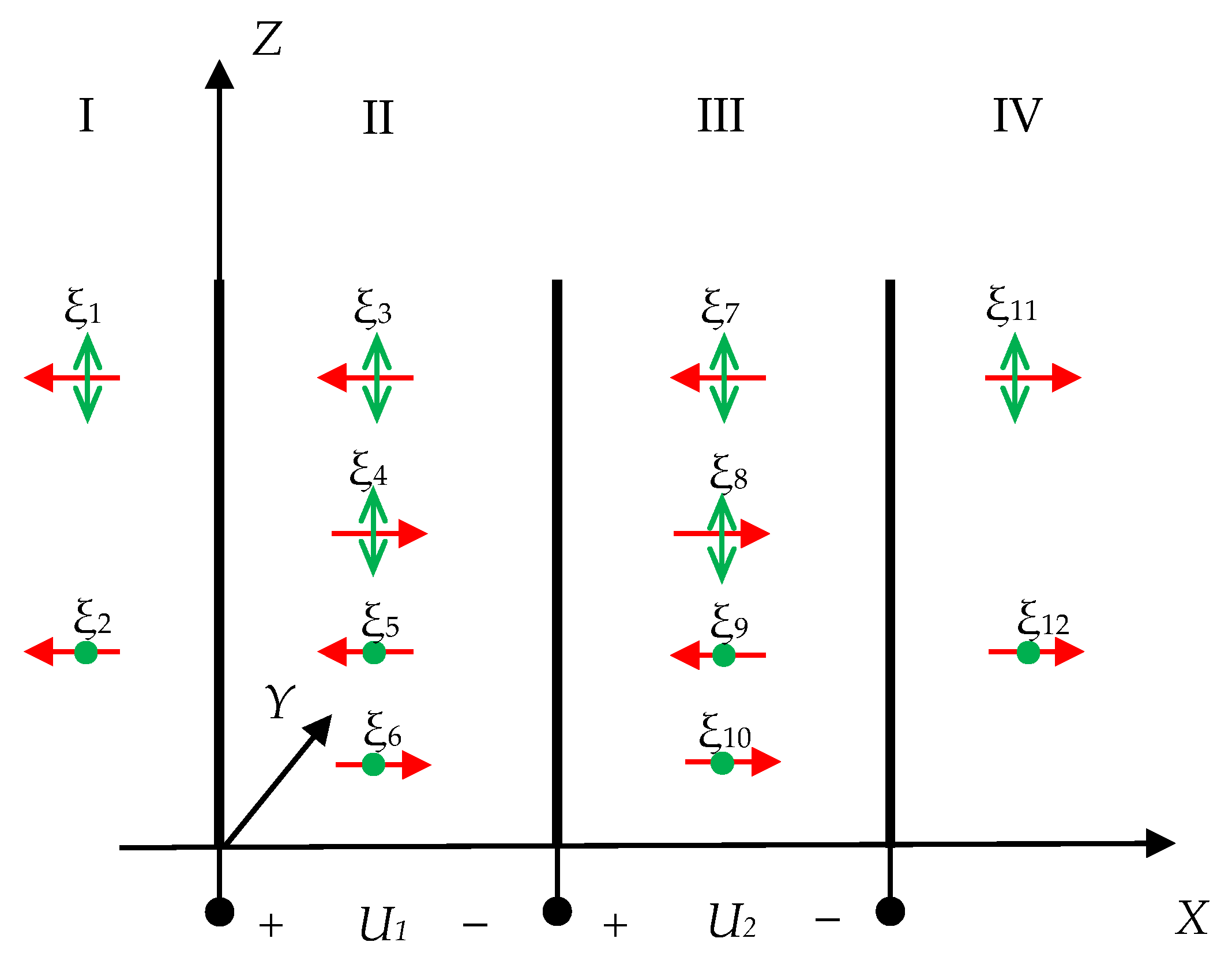
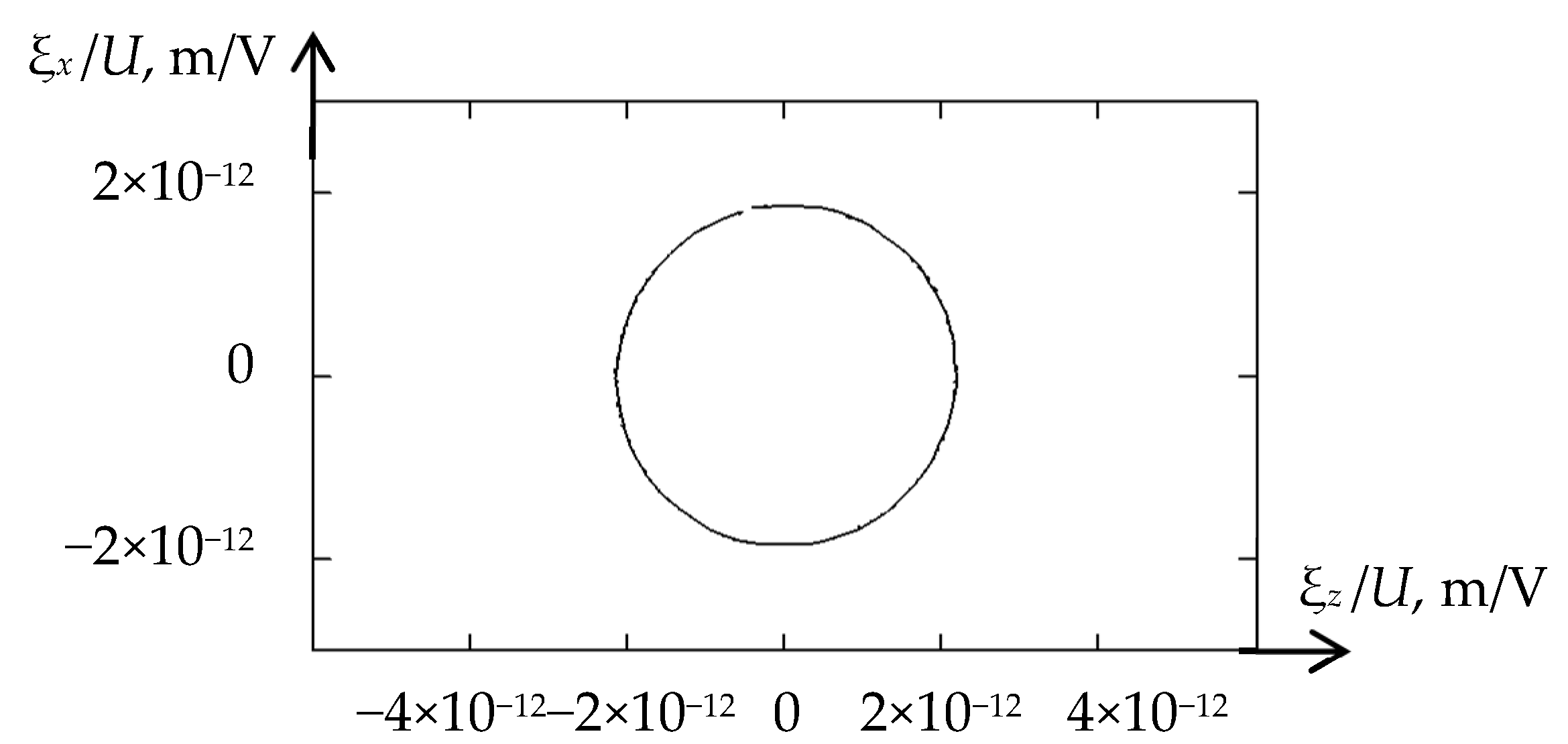
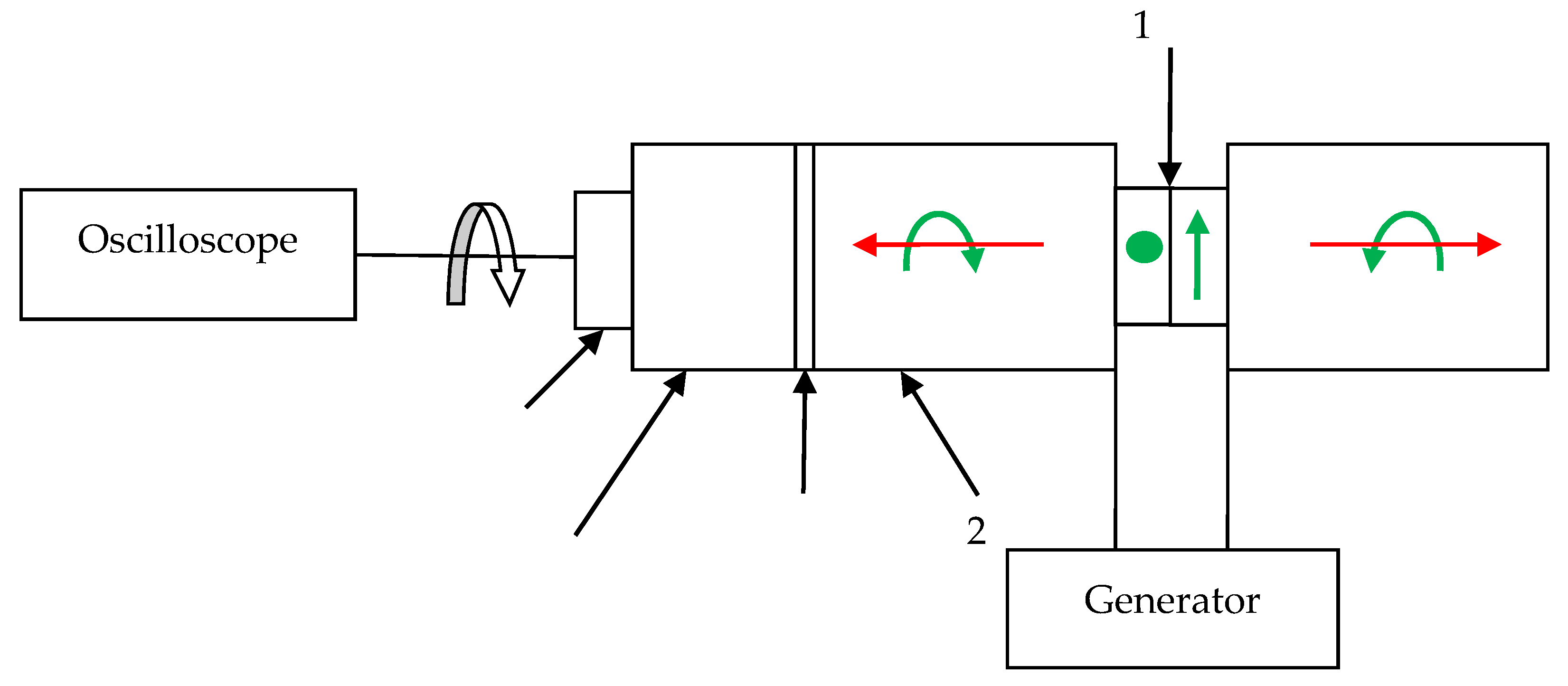
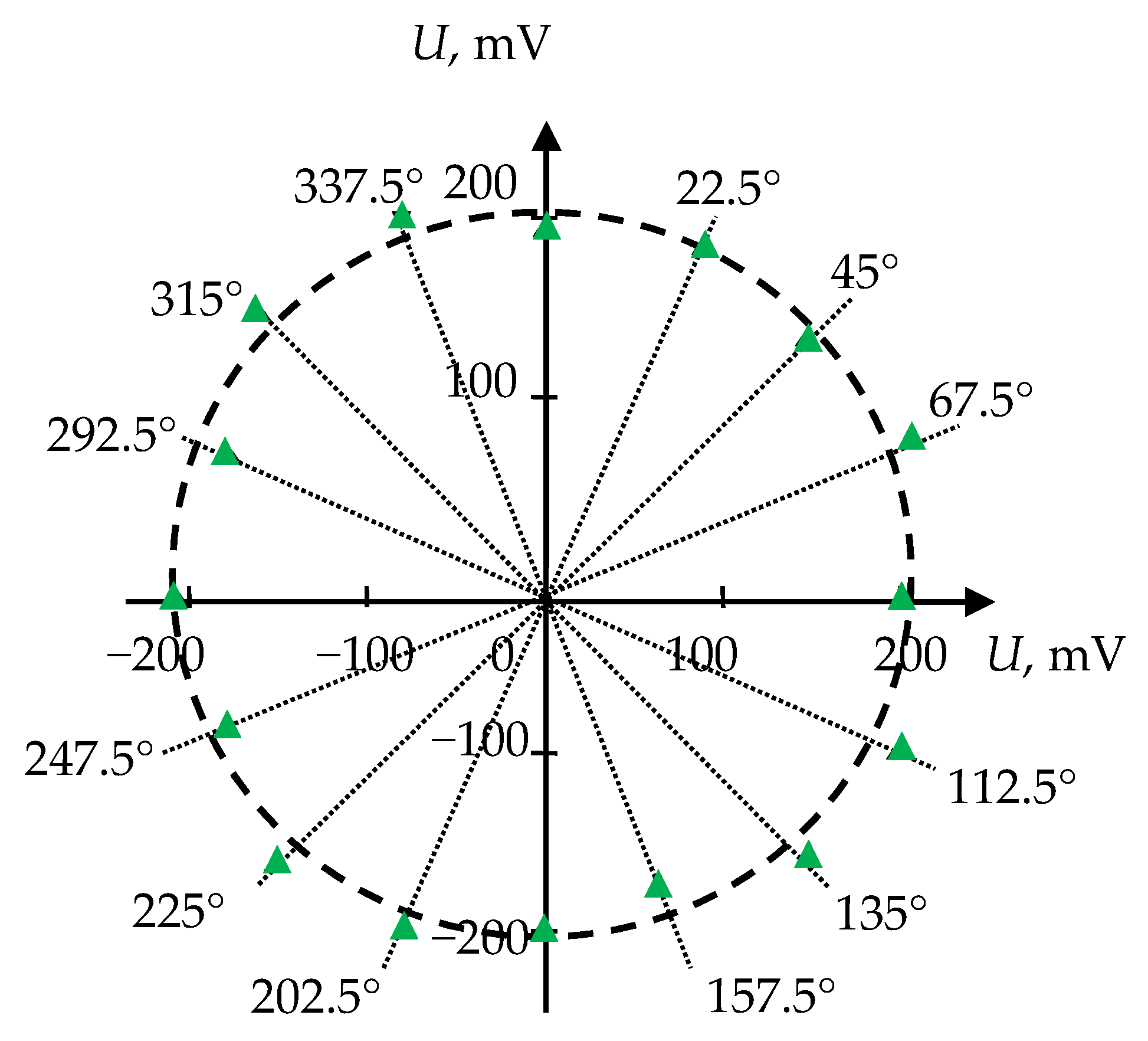
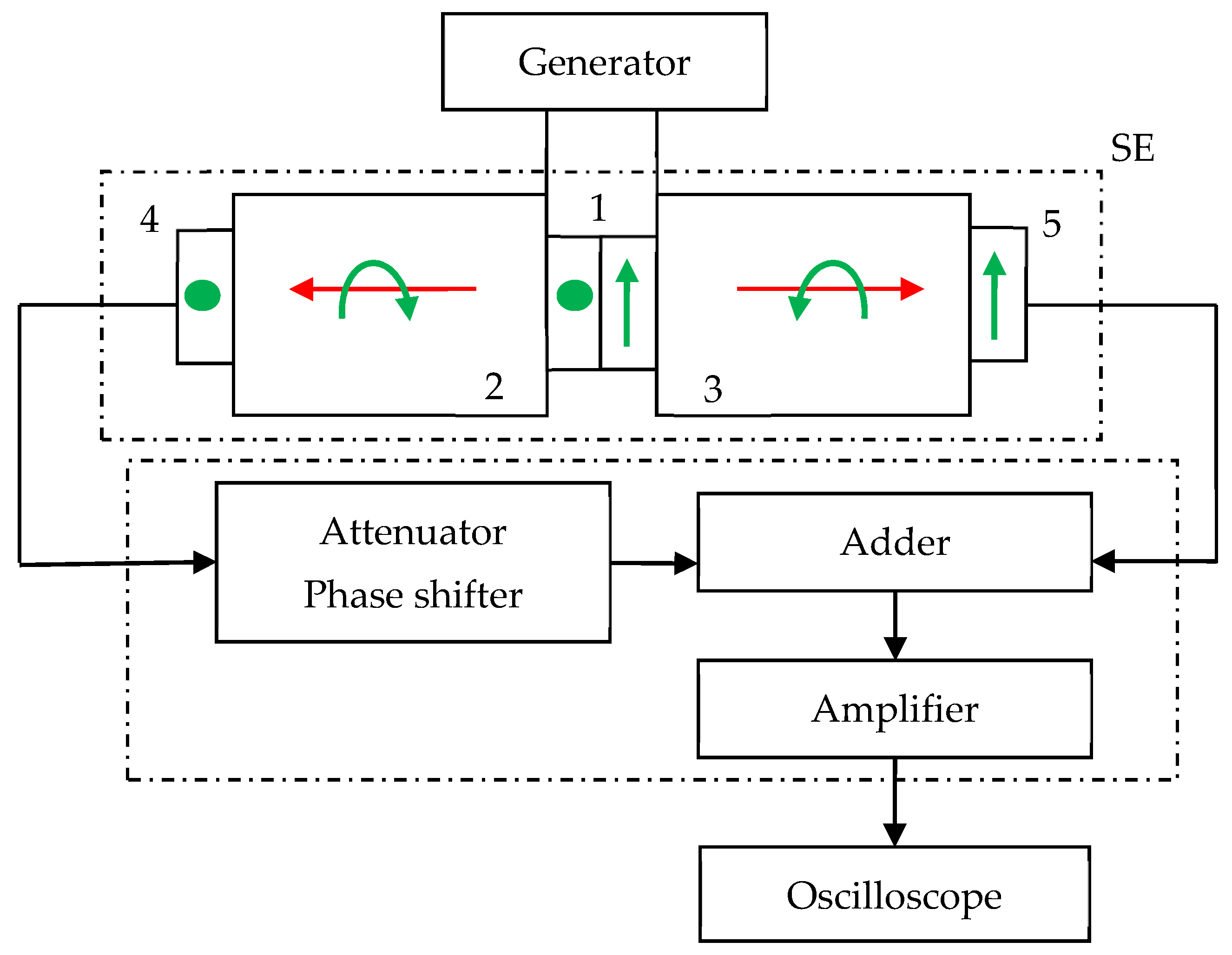

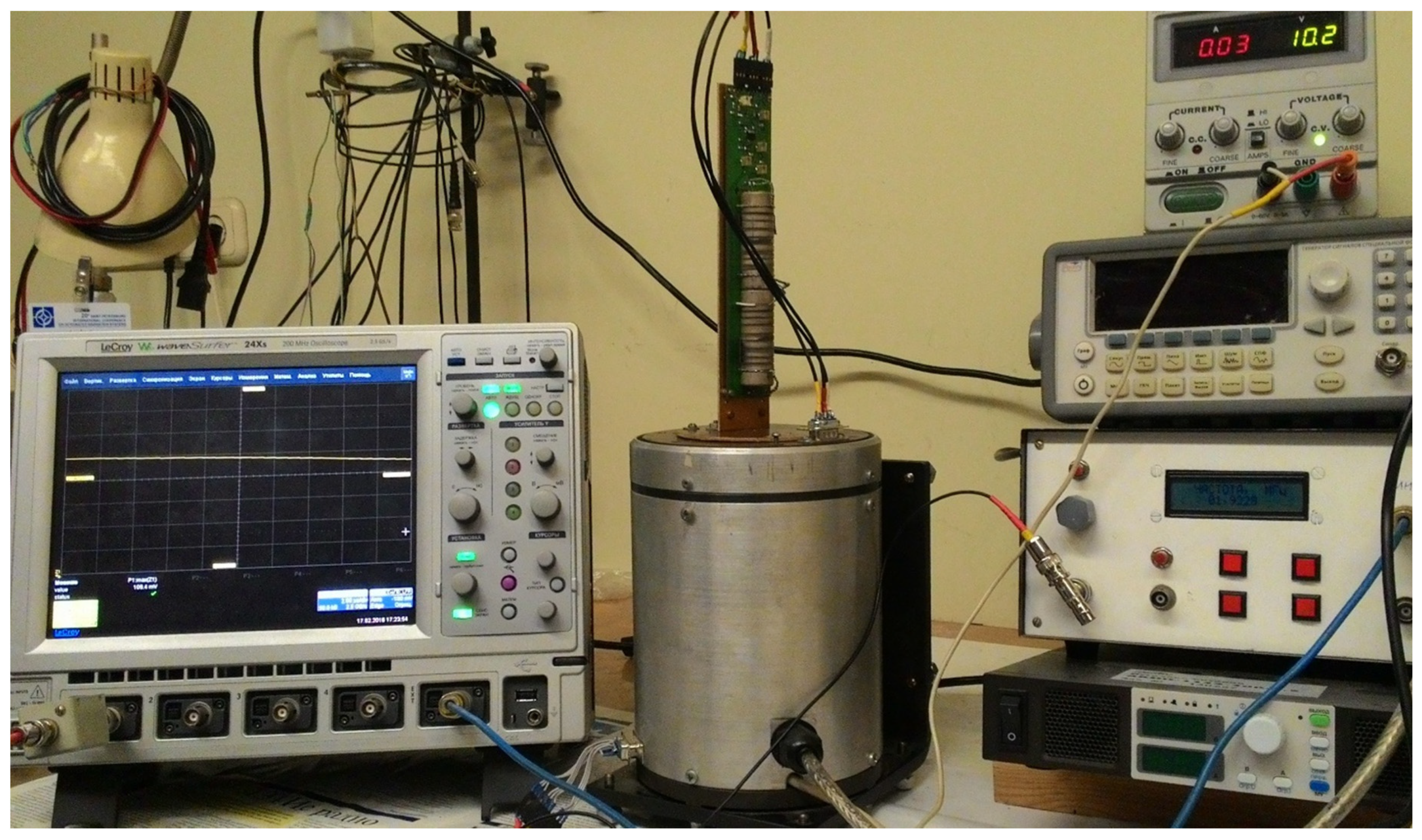

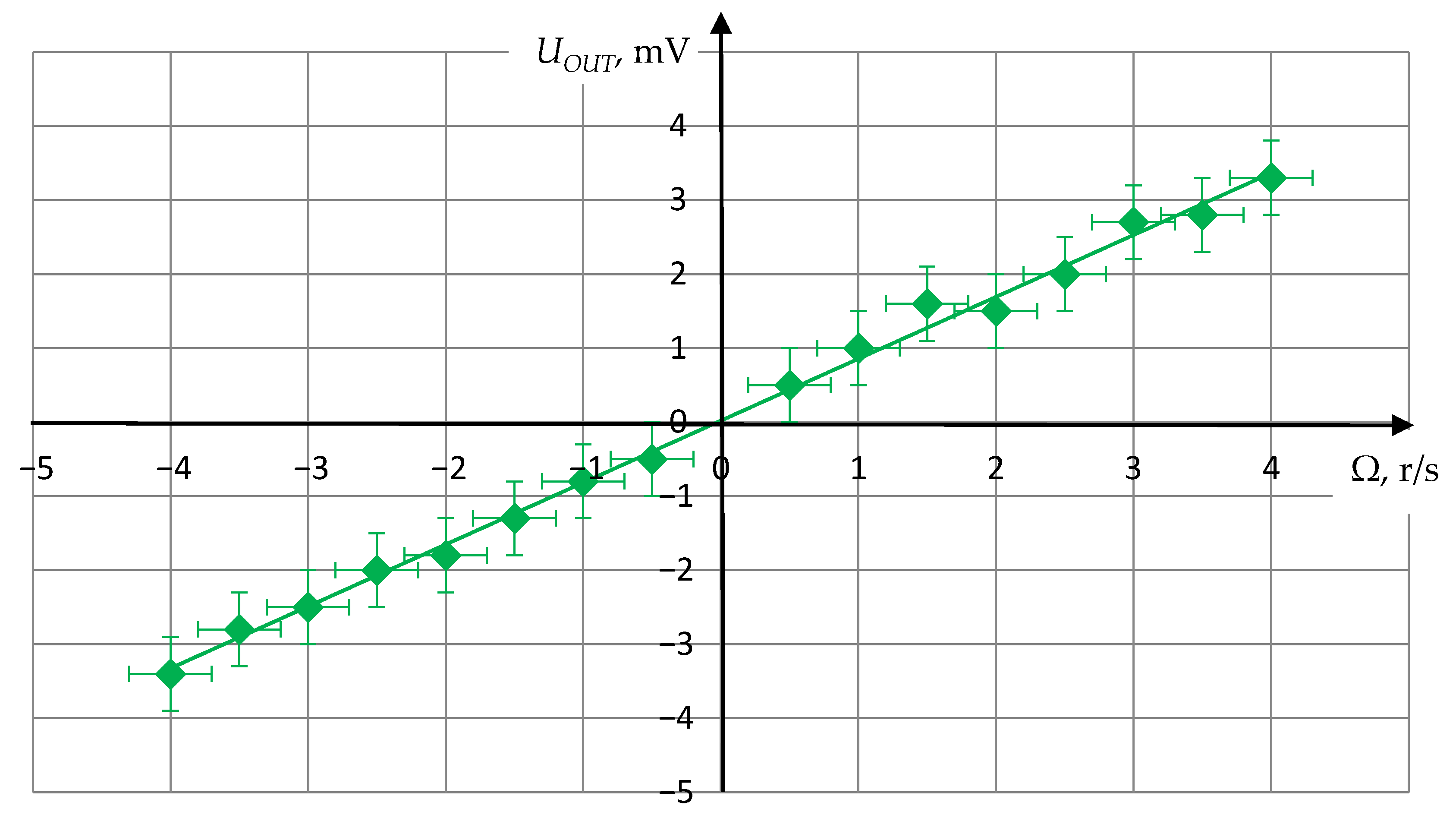
Publisher’s Note: MDPI stays neutral with regard to jurisdictional claims in published maps and institutional affiliations. |
© 2020 by the authors. Licensee MDPI, Basel, Switzerland. This article is an open access article distributed under the terms and conditions of the Creative Commons Attribution (CC BY) license (http://creativecommons.org/licenses/by/4.0/).
Share and Cite
Shevelko, M.; Lutovinov, A.; Peregudov, A.; Popkova, E.; Durukan, Y.; Shevchenko, S. The Sensitive Element of Acoustic Sensor on Circular Polarized Waves: From Theoretical Considerations towards Perspective Rotation Rate Sensors Design. Sensors 2021, 21, 32. https://doi.org/10.3390/s21010032
Shevelko M, Lutovinov A, Peregudov A, Popkova E, Durukan Y, Shevchenko S. The Sensitive Element of Acoustic Sensor on Circular Polarized Waves: From Theoretical Considerations towards Perspective Rotation Rate Sensors Design. Sensors. 2021; 21(1):32. https://doi.org/10.3390/s21010032
Chicago/Turabian StyleShevelko, Michail, Andrey Lutovinov, Aleksandr Peregudov, Ekaterina Popkova, Yasemin Durukan, and Sergey Shevchenko. 2021. "The Sensitive Element of Acoustic Sensor on Circular Polarized Waves: From Theoretical Considerations towards Perspective Rotation Rate Sensors Design" Sensors 21, no. 1: 32. https://doi.org/10.3390/s21010032
APA StyleShevelko, M., Lutovinov, A., Peregudov, A., Popkova, E., Durukan, Y., & Shevchenko, S. (2021). The Sensitive Element of Acoustic Sensor on Circular Polarized Waves: From Theoretical Considerations towards Perspective Rotation Rate Sensors Design. Sensors, 21(1), 32. https://doi.org/10.3390/s21010032





